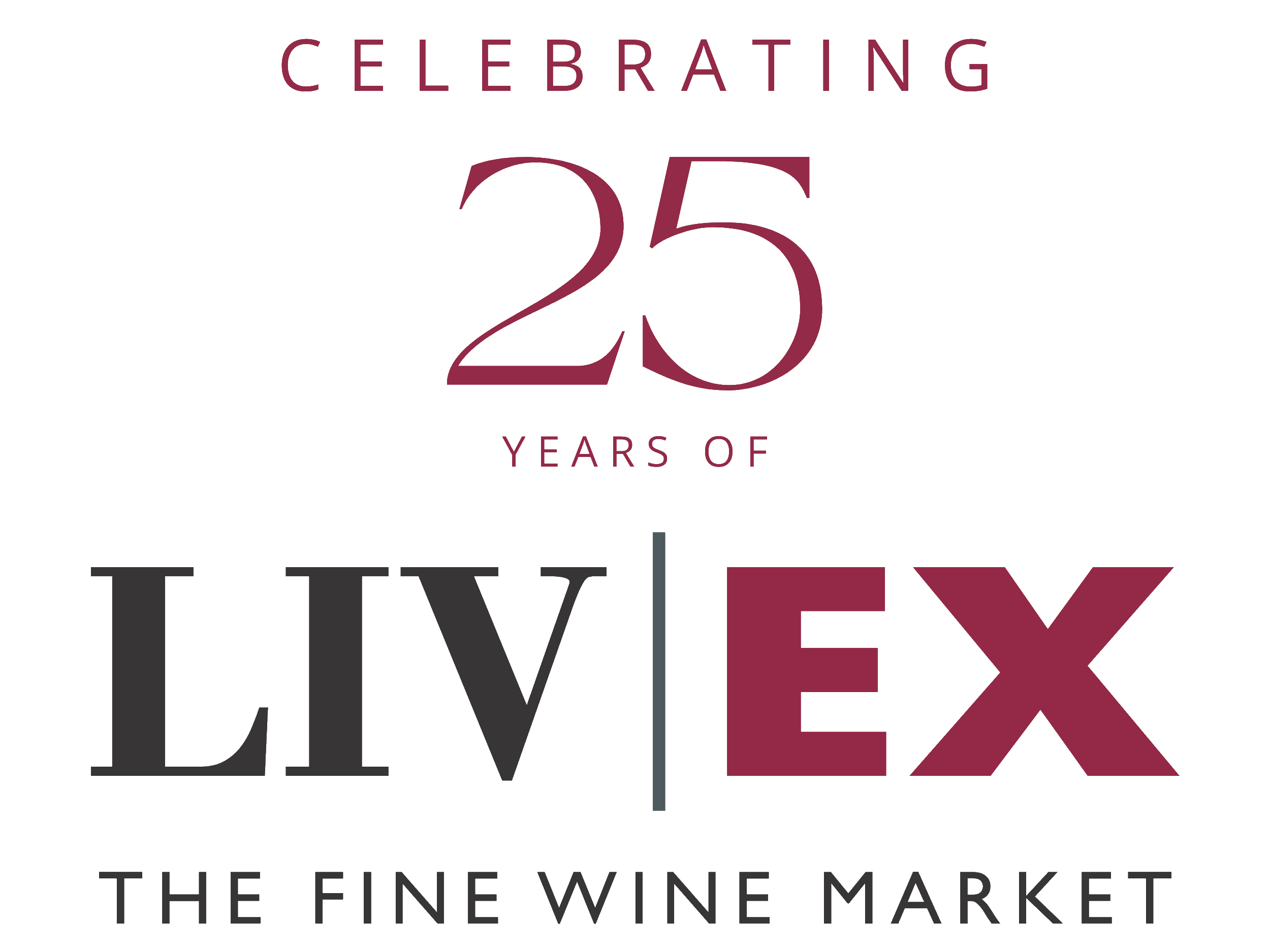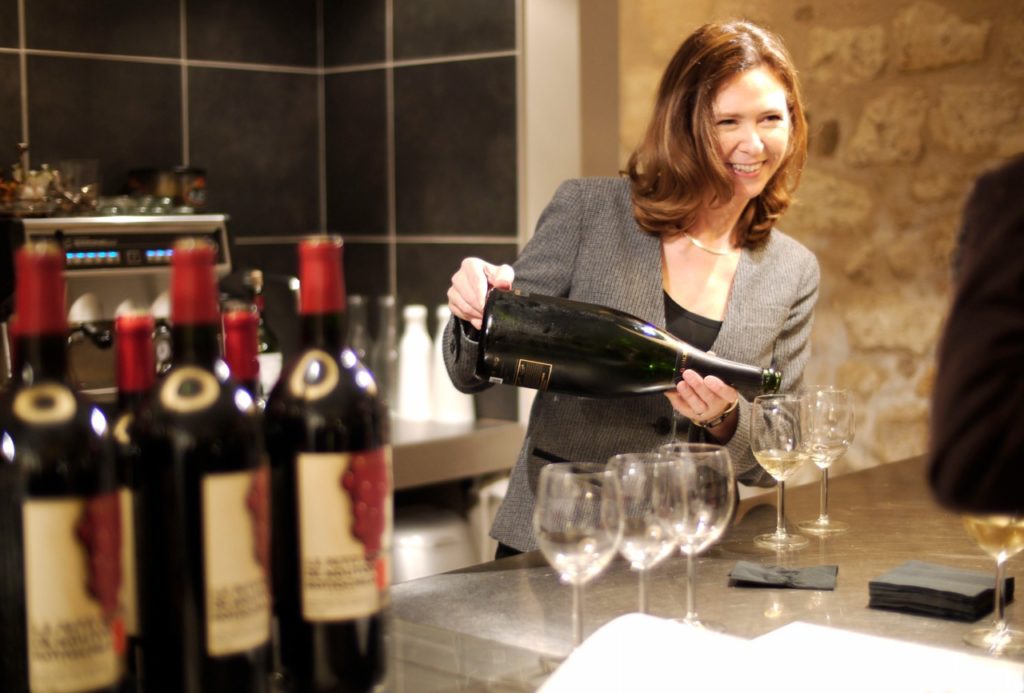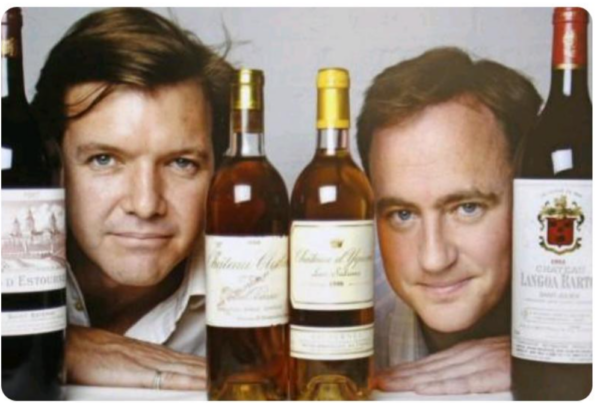Jane Anson is Decanter’s Bordeaux correspondent and has lived in the region since 2003. In February of this year it was announced that she would be the sole Bordeaux En Primeur taster for the publication. Having recently published her verdict on the vintage, Anson kindly put some time aside to share her thoughts with Liv-ex. In the interview below, she talks Bordeaux 2016, wine criticism and her career.
Can you tell us a bit about your path to becoming a wine journalist? How did you become interested in wine?
I was a journalist and editor before being a wine writer, and still very much take the approach that distance and context is essential for doing this job, as well as having basic story telling and fact checking skills. The shift towards wine as a profession was gradual, but it’s hard to remember when I didn’t like the idea of eating, drinking and travelling. The day after graduation I moved to Japan for one year, then Hong Kong for three years from 1994 to 1997 (and still write for the South China Morning Post). This was way before the 2008 cutting of import duty, so often you’d see 100% tax on imported wine, and the choice was very limited – which basically meant that we drank Paul Masson jug wine far more than can be good for anyone. Having said that, there was certainly a growing wine culture there that I was able to take advantage of, and I love that wine has since taken me back regularly to Hong Kong and China – even Japan, to visit the Yamanashi vineyards.
My first ‘wine journalist’ moment came in South Africa in 1996, when I met Jabulani Ntshangase, the first black manager of the wine centre at Spier Winery in Stellenbosch. This was two years after the first free elections in South Africa, and Jabulani had just returned to South Africa from New York, where he been working with Acker and Merrill after leaving his home in KwaZulu-Natal at the height of apartheid. Interviewing him opened my eyes to the possibilities of writing about wine for a living. Later, I learnt that Jabulani had made good on his promise by being part of the Wine Industry Trust programme with the Ministry of Land and Agriculture. The programme recruited young students with a talent for maths and science, and enrolled them in Stellenbosch University, where they studied Viticulture and Oenology – a few years ago I met one of his students in Bordeaux. Last October I met up with Jabulani in New York, our first meeting in 20 years. I got to tell him what a profound impact he had had on my career.
You have recently tasted the 2016 vintage. How would you describe the quality and style of the wines in general?
This is undoubtedly an exceptional year, although it is not an even success across red, white and sweet wines. 2016 is without question a red wine year, and the best of them are up with the greatest ever produced in the region. Alcohols are lower than in other recent ‘blockbuster’ years – in many cases a full percentage point below the 2015s, 2010s and 2009s, and as a result the construction is perfectly in balance, and the fruit strikingly juicy. There are big tannins also, with some IPT counts climbing up to the 90s and higher, but you can barely tell because they are so smoothed out, elongated and finely-grained.
How would you rank it against 2005, 2009, 2010 and 2015?
Speaking generally across Bordeaux, I rank it close to the 2009 and 2015s, although different in style, and lower than 2005 and 2010.
Around what levels do you believe that the 2016 vintage should be priced?
Bordeaux has enjoyed a run of three good vintages in 2014, 2015 and 2016, something that is extremely rare (1988, 1989 and 1990 would be another similar triumvirate), and it’s hard to pin the tail on 2016 as being definitively the best, much as many producers in the region would like to. So consumers have three vintages to pick from, and I would suggest prices shouldn’t go higher than 2015. Or if they do, that consumers exercise great caution and think of selecting 2015 for the Right Bank and Margaux, and 2014 for the northern Medoc instead.
The value of the En Primeur system clearly divides opinion. Do you see a future for En Primeur?
It has worked for so long because it’s been a source of revenue for merchants globally as well as for the Bordeaux chateaux and negociants, as well as an efficient and – occasionally – enjoyable way to sell to wine. But as margins shorten for negociants and merchants, it becomes less of a driver and you are seeing a clear shift away from the system. Consumers have been disappointed with returns in recent years, but the bigger long-term concern is that chateaux don’t allow enough money into the rest of the system to make the investment of time worthwhile for retailers in the US, UK and other parts of the world. They have to understand that if it is not a revenue source for other parts of the chain, eventually it will no longer be one for them either.
You have been living in Bordeaux since 2003. How has the wine trade and style of wines produced changed since then?
A general shift from the big fruit bombs to more classic wines. A rise in interest in sustainability, whether biodynamics or other environmental initiatives. An increasing battle between old and new ways of selling.
Do you have a favourite Bordeaux vintage?
2005 comes pretty close to perfection for me.
Within Bordeaux, which chateaux are you most excited about?
On the rise in my book are Canon, Clos Puy Arnaud, Lafon Rochet, Clerc Milon, Pedesclaux, Olivier to name a few.
From this year, you will be Decanter’s sole Bordeaux En Primeur taster. Do you feel increased responsibility with this new role?
I had been in Bordeaux for 10 years writing and learning before really stepping up the wine criticism aspect of my job. By that time I’d studied WSET in London and the DUAD at Bordeaux School of Oenology, tasting with Boissenot, Berrouet, Dubourdieu and all of these wonderful winemakers that I have been lucky enough to spend time with, but also making my own discoveries. The DUAD in particular concentrates a lot on oenology, breaking down the molecules in wine, and offers a brilliant way to deconstruct what is in the glass in front of us, and to understand why certain wines smell the way they do, or age the way they do. It helped me not just have confidence in my tasting, but made me want to share it. I’m very happy that I waited, because I take the responsibility seriously.
Is it harder for you to score impartially as you get to know the growers more?
Of course not. I might be more cynical than people who just visit Bordeaux for the primeurs and taste through hundreds of wines, but the expertise and broad knowledge base gained from living here has only been an asset.
What is your view on tasting blind?
I’m a fan of blind tasting, and try to do it as often as possible. But for En Primeur I have come to accept that the correct approach is everyone or no one. And knowing how estates perform long term is helpful when the wines are unfinished. My job – in fact the only job of an En Primeur taster – is to help wine drinkers and buyers make informed decisions. Whether I can identify Carmes Haut-Brion blind might be flattering for me, but doesn’t actually help buyers decide if they want to part with their money. Knowing that it has the highest proportion of Cabernet Franc on the left bank and so can seem quite austere when young, but will develop beautifully and retain freshness over time certainly could.
With the retirement of Robert Parker, the rise of a number of specialist critics around the world and the increasing popularity of social media platforms such as Vivino, the marketplace for wine reviews is becoming increasingly broad – some say more ‘democratic’. How do you see this panning out? Will anyone ever have Parker’s influence again?
We’ve all seen newspapers reduce their wine columns or get rid of them entirely, and seen bloggers become just as influential as many of the traditional critics. I’m part of that shift really, because I didn’t get into wine through traditional routes, even though I had the huge advantage of Decanter’s support. At the end of the day, it comes back to delivering good content responsibly and regularly. Wine criticism is no different from any other form of content delivery – you find your audience and you deliver what they are looking for as honestly and as entertainingly as possible.
Robert Parker worked incredibly hard to achieve what he did, and was true to himself, whether or not I agree with some of his tasting judgements. If someone else is able to achieve that, then good for them. It’s worth adding that that I earn my living pretty much 100% from writing about wine. I teach a little at the wine school in Bordeaux, but basically I write for a living, which is unusual today in the wine industry. It’s great news for future wine writers that it’s still possible to do that, even with the new media landscape.
What is your view on an average or consensus critic score for fine wines?
For individual buyers, the best way to decide what to buy if you are not tasting yourself is to find a critic whose taste you broadly agree with. But there is a value for merchants who are buying larger quantities to look at consensus scores.
Beyond Bordeaux, which regions are exciting you the most?
My latest book is on the world’s best producers of organic, biodynamic and natural wines. It has been totally thrilling to research, write and taste for, so my answer to that would be it’s individual producers who get me excited, and they could be anywhere in the world. That’s the beauty of this job, finding the guys to champion wherever they are. A few that really stood out include Abbatucci in Corsica, Gulfi in Sicily, Elisabetta Foradori in Alto Aldige, Bodega Chacra in Patagonia, Gut Oggau in Austria, Lightfood and Wolfville in Nova Scotia… and so, so many in Spain.
The wine trade is a traditionally male-dominated industry. What’s your experience of this and how it’s changed over the years?
In any industry, success is about sticking at something, taking the work seriously and yourself less so. This is no less true in wine than in any other industry, whoever you are.
What would you consider to be your greatest career achievement to date?
I don’t know about greatest, but the best example of ‘the harder I work, the luckier I get’ is writing Bordeaux Legends. I started it without a publisher, meaning without an advance, and didn’t secure Editions de la Martinière until half way through the project – and even then it was on a deal where I had to pre-sell a certain number of books to get them to sign on the line. I just knew that it was a good idea and that the story needed to be told. The First Growths are the five most talked about chateaux in the world, linked by geography, economics, politics and history, and yet no one had explored how they got to where they are.
You’ve already published a number of books on wine, and you have another coming out soon. Which of your books are you most proud of? Can you tell us about your next work?
For the above reason, I am pretty proud of Bordeaux Legends, although I really loved writing The Club of Nine because it was such a challenge to pare down the reams of information that could be written about Petrus, Cheval, Ausone, Yquem and the Médoc First Growths to just a few hundred words on each one, and to ensure the text stood up against Andy Katz’ brilliant photography.
The next book, out in October with Quarto Publishing, is on 250 of the world’s best producers of organic, biodynamic and natural wines. There are legendary names in there – Sesti, DRC, Seresin, Henschke, Roederer, Ganevat, Pontet Canet, but also plenty of smaller guys like Domaine des Vignes du Mayne in Burgundy, Marcel Lapierre in Morgon, Intellego in South Africa, Kelley Fox in Oregon.
I’ve approached it from the point of view of looking at these wines as being part of the wider foodie culture, the rise in farm-to-table restaurants, and these producers are like great chefs working with fresh, unadulterated ingredients. Some wonderful sommeliers are introducing each section of the book giving food-matching tips, and we have a directory of the best shops, restaurants and bars globally for trying the wines out.
To view Jane Anson’s recent articles and reviews for Decanter, click here.
[mc4wp_form id=”18204″]




